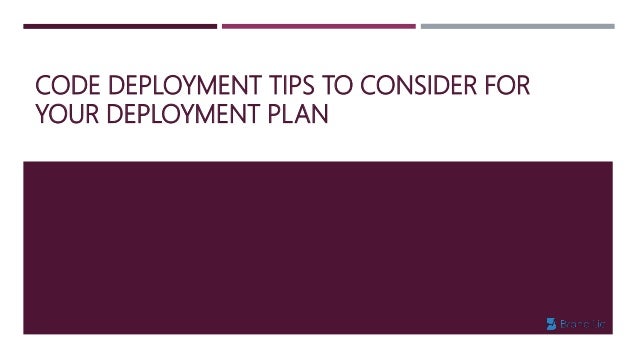Code Deployment Delays: Streamlining Code Updates and Rollouts

Executive Summary

Code deployment delays can lead to a host of problems for software development teams, including missed deadlines, increased costs, and reduced customer satisfaction. However, by following a few best practices, teams can streamline their code deployment process and avoid these problems. These best practices include utilizing continuous delivery principles, automating the code deployment process, and establishing a strong testing strategy.

Introduction
In the fast-paced world of software development, rapid and reliable code deployment is essential. Code deployment delays can quickly lead to missed deadlines, increased costs, and reduced customer satisfaction. However, by following a few best practices, teams can significantly reduce their deployment times and minimize the risks associated with code deployment.
FAQs
Q: What is a code deployment?
A: Code deployment is the process of moving code from a development environment to a production environment. This process includes several steps, such as compiling the code, testing it, and deploying it to the server.
Q: Why are code deployment delays a problem?
A: Code deployment delays can lead to a host of problems, including missed deadlines, increased costs, and reduced customer satisfaction.
Q: What can be done to minimize code deployment delays?
A: There are several things that can be done to minimize code deployment delays, including utilizing continuous delivery principles, automating the code deployment process, and establishing a strong testing strategy.
Best Practices for Streamlining Code Deployments
Continuous Delivery
Continuous delivery is a set of principles and practices that allow teams to deliver code changes to production quickly and reliably. The cornerstone of continuous delivery is continuous integration (CI), which involves automating the build and test process. Continuous delivery also includes practices such as continuous deployment in which code changes are automatically deployed to production after passing all tests.
Automation
Automating the code deployment process can significantly reduce the time it takes to deploy new code and decrease the risk of errors during development. There are numerous tools that can be used to automate the deployment process, including Jenkins and CircleCI.
Testing
A comprehensive testing strategy helps ensure that new code is free of defects and will not cause any problems once deployed to production. Testing should start in the early stages of development, and should include both unit and integration testing.
Monitoring
Continuously monitoring the code deployment process is essential enabling teams to quickly identify and address any problems that arise during deployment. Monitoring should include tracking the progress of the deployment, the status of the various build and test steps, and the performance of the code in production.
Rollbacks
Having reliable rollback procedures is essential for minimizing the impact of any problems that may occur during the code deployment process. Rollback procedures should be tested and in place before any new code deployments are made.
Conclusion
By following the best practices outlined in this article, teams can significantly streamline their code deployment process and avoid the problems associated with code deployment delays. These best practices include utilizing continuous delivery principles, automating the code deployment process, and establishing a strong testing strategy. By following these best practices, teams can improve the quality of their software, reduce their time-to-market, and increase their customer satisfaction.
Keywords
- Code Deployment
- DevOps
- Continuous Delivery
- Automation
- Testing

